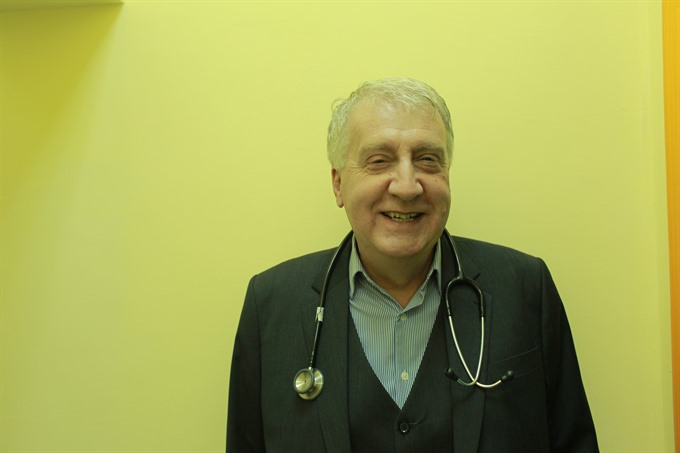 Life & Style
Life & Style

 |
| Doctor William Brian McNaull.—Photo courtesy of Family Medical Practice Hanoi |
By Dr William Brian McNaull
Are allergic reactions to food common in Việt Nam?
Food allergy affects an estimated 6 to 8 per cent of children under age 3, and about 4 per cent of adults worldwide. It’s easy to confuse a food allergy with a much more common reaction known as food intolerance. For expats living in Hà Nội, allergic reactions to local food, especially seafood, can present significant problems that may need to be addressed urgently.
For some people, an allergic reaction to a particular food may be uncomfortable but not severe. For others, an allergic food reaction can be frightening and even life-threatening. Food allergy symptoms usually develop within a few minutes to an hour after eating the offending food.
The most common symptoms include: Tingling in the mouth; hives, itching or eczema; swelling of the lips, face, tongue and throat, or other parts of the body; wheezing, nasal congestion or trouble breathing; abdominal pain, diarrhea, nausea or vomiting; dizziness, lightheadedness or fainting.
Anaphylaxis: In some people, a food allergy can trigger life-threatening symptoms, including: a swollen throat or a lump in the throat that makes it difficult to breathe; shock, with a severe drop in blood pressure and a rapid pulse, dizziness, lightheadedness and/or loss of consciousness. Emergency treatment is critical for anaphylaxis. Untreated, it can result in a coma or death.
How do food allergies develop?
The principal cause of allergic reactions to food is an immune system that mistakenly identifies a specific food substance as harmful. Immune cells release a substance known as immunoglobulin E (IgE) antibodies to fight the culprit food or food substance (the allergen). The next time one eats even the smallest amount of that food, the IgE antibodies sense it and signal to the immune system to release a chemical called histamine. It is this histamine released into the bloodstream that causes the range of symptoms described.
The majority of food allergies are triggered by certain proteins in:
Shellfish, such as shrimp, lobster and crab.
Peanuts, tree nuts, such as walnuts and pecans, as well as fish and eggs.
What is the most effective treatment?
The only way to avoid an allergic reaction is to avoid the foods that cause the signs and symptoms. However, despite your best efforts, you may come into contact with a food that causes a reaction.
For a minor allergic reaction prescribed antihistamines may help reduce symptoms. These drugs can be taken after exposure to an allergy-causing food to help relieve itching or hives. However, antihistamines alone can’t treat a severe allergic reaction.
For a severe allergic reaction, you may need an emergency injection of epinephrine and a trip to the emergency room requiring IV fluids, anti histamines, epinephrine and even steroids. Many people with known severe allergies carry an autoinjector pen for epinephrine (EpiPen).
The key treatment is to do your best to avoid the food in question, and work with your doctor to identify what steps you can take to relieve your symptoms and how to spot and respond to a severe reaction. —Family Medical Practice Hanoi
* Doctor William Brian McNaull serves as Medical Director at Family Medical Practice Hanoi, a branch of Family Medical Practice Vietnam. He brings extensive experience to the practice. For more advice on any medical topics, visit Family Medical Practice Hanoi at 298 Kim Mã Street, Ba Đình. Tel: (04) 3843 0748. E: hanoi@vietnammedicalpractice.com. Family Medical Practice’s downtown Hồ Cíi Minh clinics are located at Diamond Plaza, 34 Lê Duẩn, District 1 and at 95 Thảo Điền Street, District 2. Tel: (08) 38227848. E: hcmc@vietnammedicalpractice.com.




